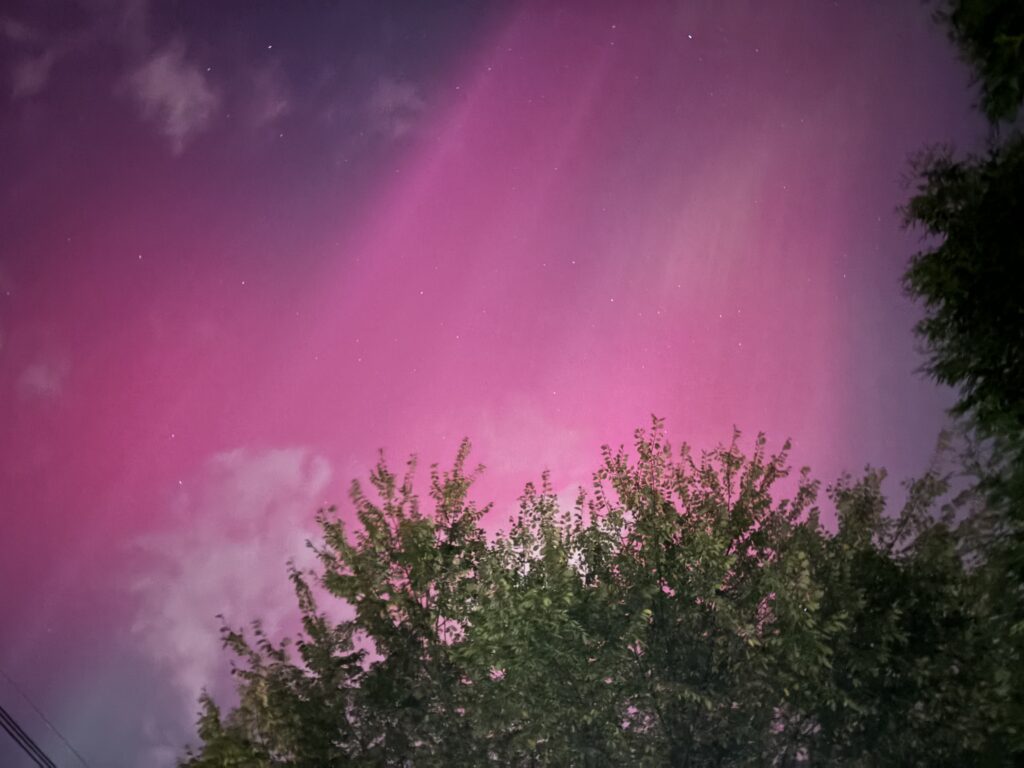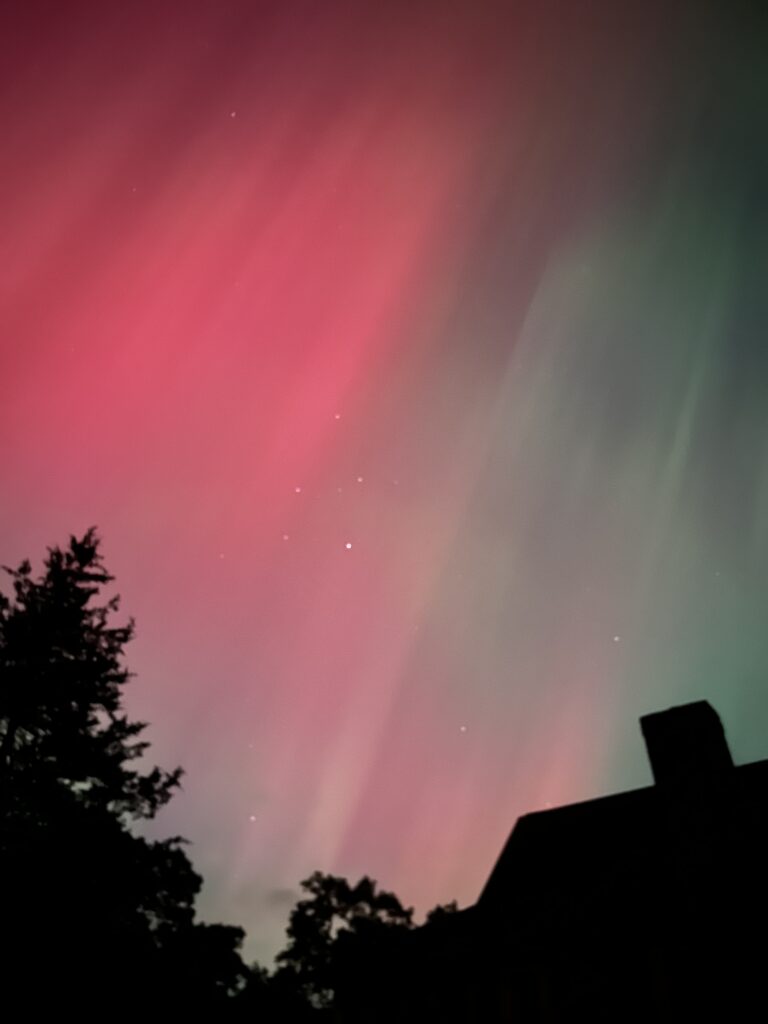
iPhone image of the Northern Lights, Oct. 10, 2024, Sudbury, MA (c) DEWolf 2024
On the evening of October 10, 2024 I was using my Celestron 8 SE and observing Saturn. I got a cell phone text from TC reminding me that the NWS was predicting Aurorae for that night and to let her know if I saw one. This prompted me to glance North, and wow the entire sky was lit up. The sun is at the high point in its activity cycle and this was one of 2024’s greatest events. Massive storms of charged plasmas being thrown out from the surface.
I have seen many wonderful photos of this event and mine are far from the best. Still they were taken with my cell phone and I am pretty pleased. Indeed, the miracle of the iPhone is further revealed by the unmoving constellation patterns, easily made out.
I want to remind everyone that invariably the Starship Enterprise in its various incarnations flies into a plasma storm. For instance that’s how Startrek Voyager winds up in the Delta Quadrant and how would you like to have to listen to Captain Janeway act tough for 75 years. I mean with all due respect she’s forever barking orders.
So what’s going on here. What’s a plasma? Plasma is often called the “fourth state of matter,” distinct from solids, liquids, and gases. It occurs when a gas is heated to extremely high temperatures or subjected to a strong electromagnetic field, causing its atoms to lose electrons and become positively charged ions. This ionized gas is a mixture of free electrons and ions, making it electrically conductive. Plasma is found in places like the Sun, stars, lightning, and even in fluorescent lights!
Aurorae, also known as the Northern and Lights, are a stunning natural light displays caused by interactions between plasma in Earth’s magnetosphere and charged particles from the Sun. These particles, primarily electrons and protons, travel toward Earth in the solar wind. When they reach our planet’s magnetic field, they are funneled towards the poles. As these high-energy particles collide with gases in Earth’s atmosphere (like oxygen and nitrogen), the atoms get excited (rise to higher energy levels) and release energy (fall back to lower energy levels) in the form of light, creating the vibrant colors we see in aurorae.
A very similar phenomenon causes emission nebulae to glow. In planetary nebulae for instance the huge flux of high energy particles from the remnant white dwarf at the center igntet the surrounding gases to glow.
And what a wondrous and spectacular phenomenon this is. It is truly and literally an out of world experience. Oh and whatever you do. remember not to fly into a plasma storm!

iPhone image of the Northern Lights, Oct. 10, 2024, Sudbury, MA (c) DEWolf 2024

Our reality can be most wonderful at times…